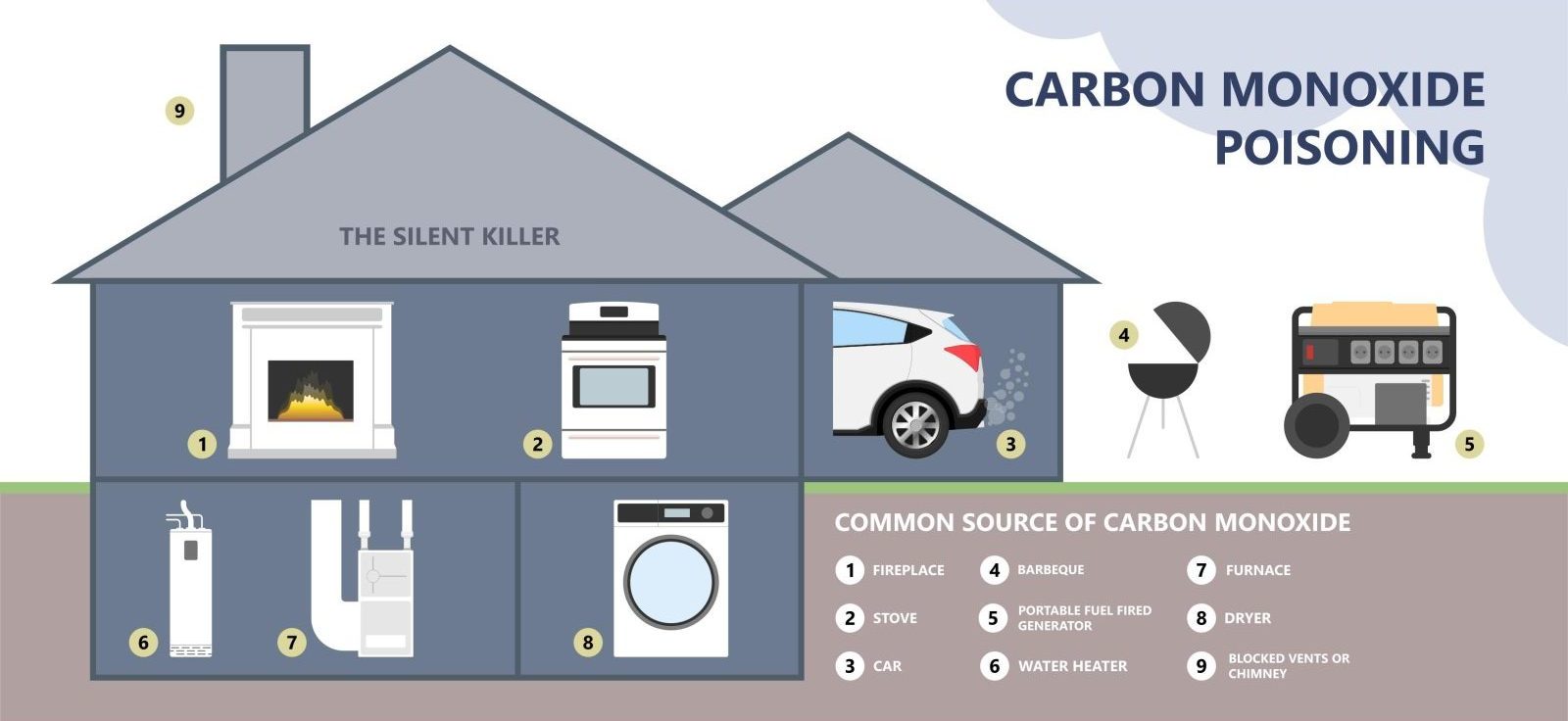
Carbon monoxide (CO2) is no joke. In fact, this colorless, odorless, tasteless gas, can lead to severe tissue damage, or even fatality. CO2 is produced by burning gasoline, wood, propane, charcoal or other fuels. Though the amount of CO2 produced by these sources isn’t usually a cause for concern, they can be extremely dangerous when they are used in a close or partially closed space. Cooking with charcoal grills indoors, smoke inhalation during a fire, and sitting in a closed garage with your car on, are all big no-nos.
When you are not in a ventilated area, the CO2 is not properly distributed and can cause you to be exposed to dangerous levels of carbon monoxide. When too much CO2 is in the air, your body replaces the oxygen in your red blood cells with CO2, resulting in CO2 poisoning. Here Haute MD expert Dr. Vineet Sandhu dives into the symptoms, risks, and preventative measures available when dealing with CO2 exposure.
 Photo Credit: Shutterstock
Photo Credit: Shutterstock
Since CO2 cannot be detected, it is essential to be aware of the symptoms that can result from being exposed to it:
- Headaches
- Weakness
- Nausea or vomiting
- Shortness of breath
- Confusion
- Blurred vision
- Loss of consciousness
In addition to the side effects of being exposed to CO2, there are many risk factors depending on your age and health status:
- Pregnant women, your unborn baby is the most susceptible to harm from carbon monoxide as fetal blood cells take up carbon monoxide more readily than adult blood cells do.
- Children, take breaths more often than adults do.
- Older adults, if you experience carbon monoxide poisoning, you are more likely to develop brain damage.
- Chronic heart disease patients, if you have a history of anemia and breathing problems, you are more likely to get sick from exposure.
 Photo Credit: Shutterstock
Photo Credit: Shutterstock
Between the symptoms and risks of carbon monoxide exposure, you might wonder how you can step up your preventative measures game. Being that your senses can’t be of help to you here, this is what you can do:
- Install carbon monoxide detectors. Place one in the hallway near each sleeping area in your home. Check the batteries every time you check your smoke detector battery (twice a year). If the alarm sounds, leave the house and call 911.
- Open the garage door before you start your car. Never leave your car in a closed garage; that is a guaranteed way to be exposed to CO2.
- Use gas appliances. Never use a gas stove or over to heat your home!
- Keep your fuel-burning appliances vented. Space heaters, water heaters, fireplaces, wood-burning stoves.
- Ask your utility company to check all gas appliances yearly.
When following all of these suggestions, you are reducing the possible exposure to carbon monoxide and experiencing CO2 poisoning. If you have any questions regarding carbon monoxide exposure, consult via telemedicine with Dr. Vineet Sandhu today.
For more information, visit Dr. Vineet Sandhu's social media:





















